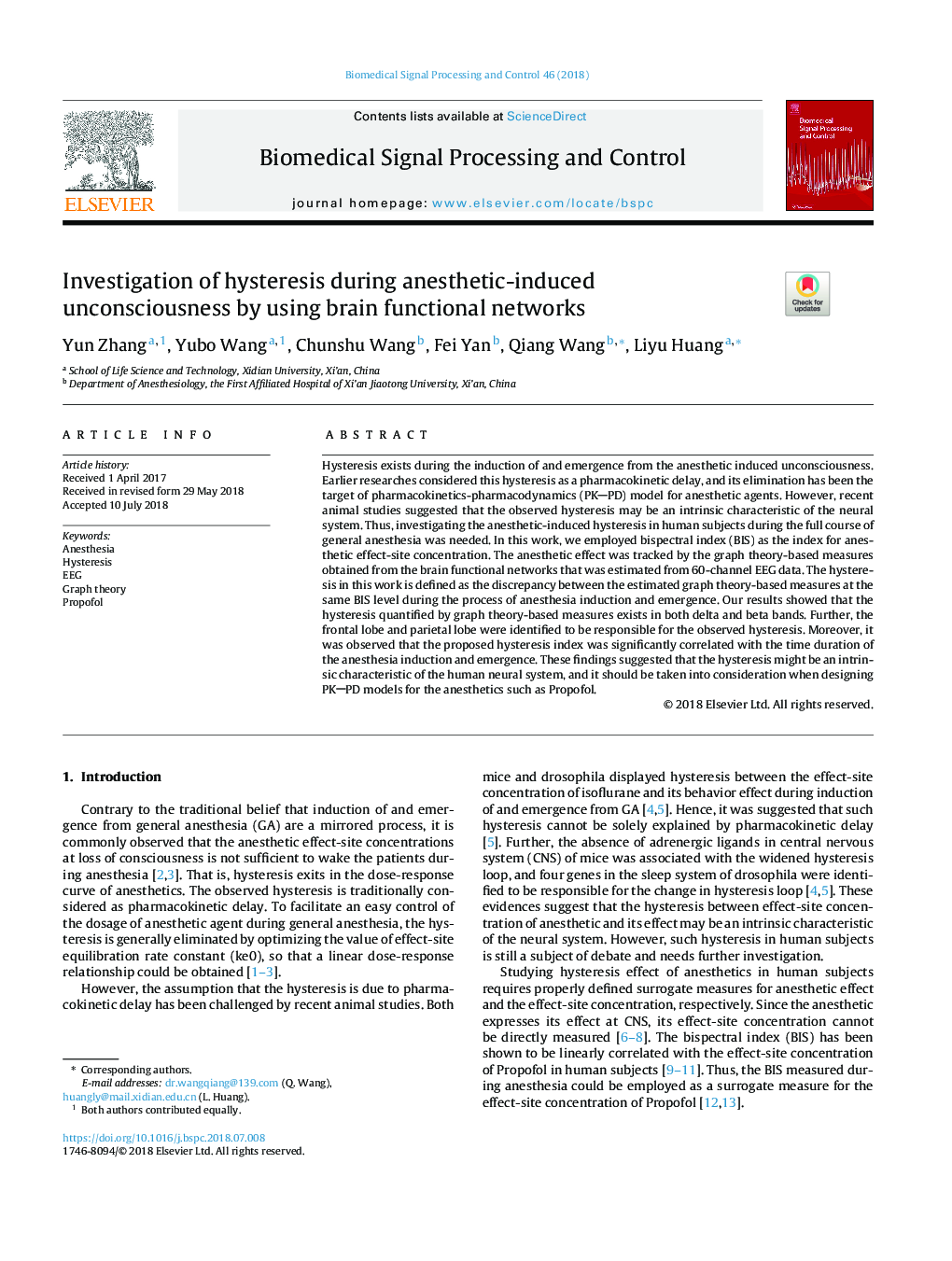| Article ID | Journal | Published Year | Pages | File Type |
|---|---|---|---|---|
| 11002931 | Biomedical Signal Processing and Control | 2018 | 9 Pages |
Abstract
Hysteresis exists during the induction of and emergence from the anesthetic induced unconsciousness. Earlier researches considered this hysteresis as a pharmacokinetic delay, and its elimination has been the target of pharmacokinetics-pharmacodynamics (PKPD) model for anesthetic agents. However, recent animal studies suggested that the observed hysteresis may be an intrinsic characteristic of the neural system. Thus, investigating the anesthetic-induced hysteresis in human subjects during the full course of general anesthesia was needed. In this work, we employed bispectral index (BIS) as the index for anesthetic effect-site concentration. The anesthetic effect was tracked by the graph theory-based measures obtained from the brain functional networks that was estimated from 60-channel EEG data. The hysteresis in this work is defined as the discrepancy between the estimated graph theory-based measures at the same BIS level during the process of anesthesia induction and emergence. Our results showed that the hysteresis quantified by graph theory-based measures exists in both delta and beta bands. Further, the frontal lobe and parietal lobe were identified to be responsible for the observed hysteresis. Moreover, it was observed that the proposed hysteresis index was significantly correlated with the time duration of the anesthesia induction and emergence. These findings suggested that the hysteresis might be an intrinsic characteristic of the human neural system, and it should be taken into consideration when designing PKPD models for the anesthetics such as Propofol.
Related Topics
Physical Sciences and Engineering
Computer Science
Signal Processing
Authors
Yun Zhang, Yubo Wang, Chunshu Wang, Fei Yan, Qiang Wang, Liyu Huang,
